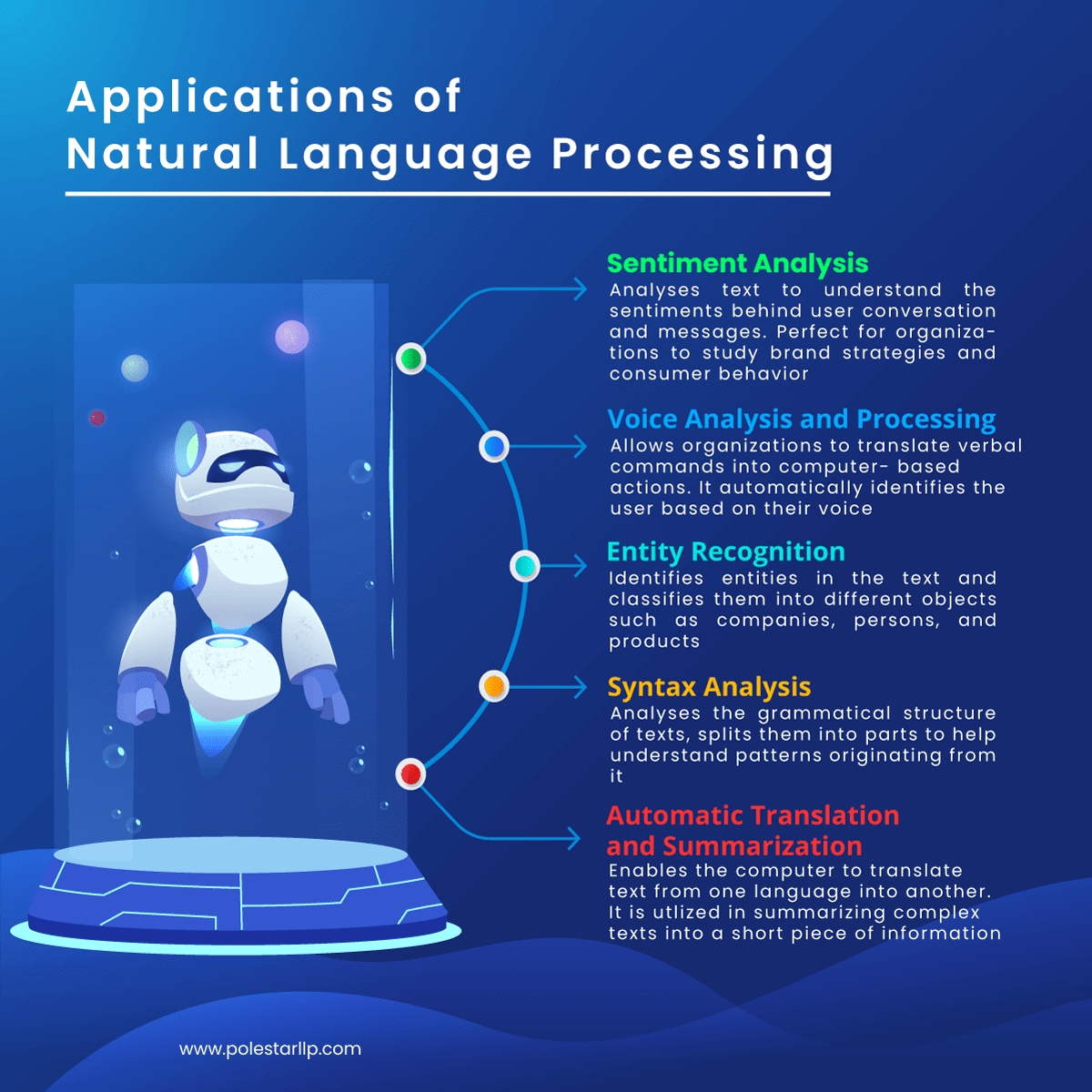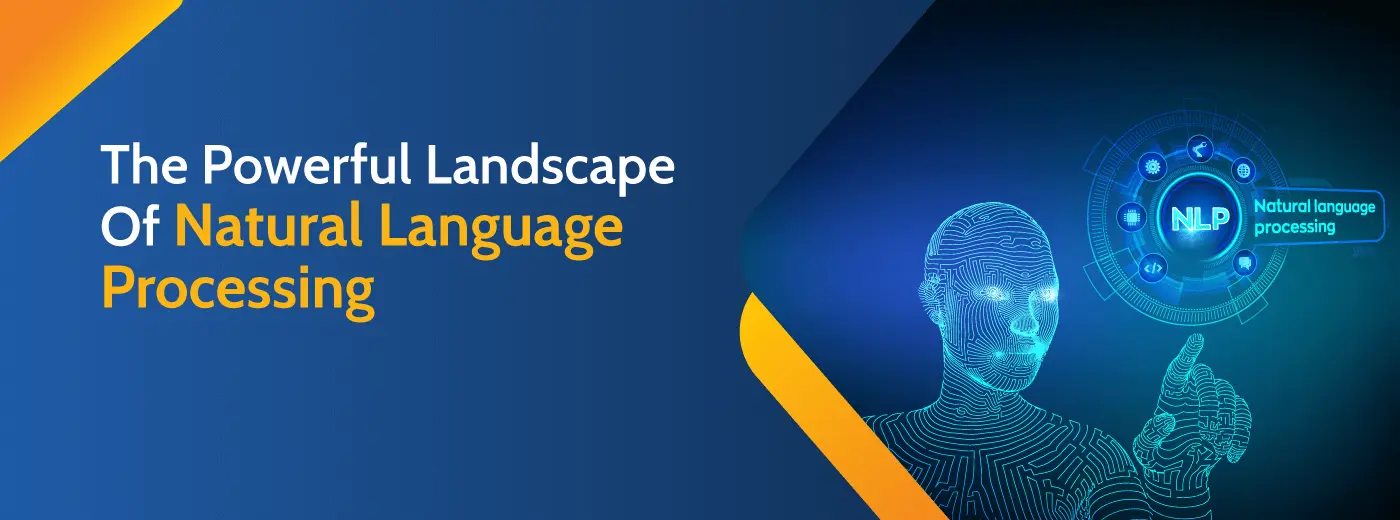We all grew up watching science-fiction movies where the hero interacts with machines and robots on his mission to get his ladylove held by the villains. Much like Trigonometry in Mathematics, NLP for a greater part remains to be a fairly independent and intriguing component of data science.
The combination of AI, computer science, and computational linguistics has made it possible through Natural Language Processing (NLP). The technique incorporates machine-based algorithms which can derive meaning from both verbal and written communication.
What is NLP?
Natural language processing (NLP) is a branch of artificial intelligence that helps computers understand, interpret and manipulate human language. NLP draws from many disciplines, including computer science and computational linguistics, in its pursuit to fill the gap between human communication and computer understanding.
Let's get into the roots of Natural Language Processing.
Concepts
Natural Language Processing relies on two basic concepts:
Natural Language Understanding (NLU) - This relies on algorithms to break down human speech into computable characteristics or properties called feature vectors, with AI helping to refine the recognition of things like timing, intent, and sentiment. In this way, NLU can understand input via text or speech. Actually, NLU looks beyond words to search out meaning, getting to the core of communication, spelling errors and mispronunciations. Such systems depend on a predefined lexicon and a set of grammatical rules.
Natural Language Generation (NLG) - Refers to the computer's capability to generate text, whether by converting data to written language, translating speech to written text, or converting text to audible speech. Speech-to-text and Text-to-speech engines depend on NLG to give coherent messages, backed by a predefined lexicon and a set of grammar rules.
Most of the big names in technology have introduced NLP applications, including – Amazon, Microsoft, Google, IBM, and more.
Approaches in NLP can be divided into three categories-
Rule-based systems rely heavily on crafting domain-specific rules such as - regular expressions. It can be used to solve simple problems like - extracting structured data emails, web-pages (unstructured data), but due to the complexity of human natural languages, rule-based systems fail to build models.
Classical Machine Learning approaches are used to solve harder problems which rule-based systems can't solve very well like - Spam Detection. It relies on a more general approach to understanding language, using hand-crafted features (e.g. sentence length, part of speech tags, the occurrence of specific words) and then providing those features to a statistical machine learning model, which learns different patterns in the training set and then be able to reason about unseen data.
Deep Learning models are the newest part of NLP research and applications now; they generalize even better than the classical machine learning approaches as they don't need hand-crafted features because they automatically work as feature extractors, which helped a lot in building end-to-end models (little human-interaction).
Aside from the feature engineering part, deep learning algorithms learning capabilities are more potent than the shallow/classical ML ones, which paved the way to achieving the highest scores on different hard NLP tasks like Machine Translation.
Applications

NLP is a component of AI and is widely used to recognize - language translation, human speech, information retrieval and AI. Many of us embrace NLP in our day-to-day lives, from asking for directions to our smartphones and hearing automated calls from call centres.
By leveraging this technology, organizations improve operational efficiencies and create new values. Most of the applications of NLP include:
1. Sentiment Analysis: This analyses text to understand the sentiments behind user conversation and messages. It is utilized by social analytics organizations to study brand strategies and consumer behaviour. For instance - Hospitality brands, financial institutions, retailers, transportation companies, and other businesses use sentiment analysis to optimize customer care department work. With text analysis platforms like IBM Watson, Natural Language Understanding users can automate the classification of incoming customer support messages by polarity, topic, aspect, and priority.
Analyze human emotions and sentiments to uncover undiscovered insights and utilize big data to achieve the best results.
2. Voice Analysis and Processing: It is used to recognize the human voice. It automatically identifies the user based on their voice. Further, it allows companies to translate verbal commands into computer-based actions. A major developing field inside voice analytics is in customer service. By using big data techniques combined with voice analysis - analyzes a huge volume of call data, a company can glean important business insights.
3. Entity Recognition: It identifies entities in the text and classifies them into different objects such as companies, persons, and products. Google search is one of the best examples of this application. It helps in numerous applications like - receipt character recognition, invoice character recognition, check character recognition, legal billing document character recognition, and so on.
4. Syntax Analysis: It analyses the grammatical structure of texts, splits them into parts to help understand patterns originating from it. The most common tasks based on which NLP performs the above applications include - tokenization (splitting text into words), tagging of speech, creating parse trees (it creates sentence diagrams) and classifying/grouping different entities.
5. Automatic Translation and Summarization: This application enables the computer to translate text from one language into another. It is utilized in summarizing complex texts into a short piece of information. With automatic summarization, it is easy to create a short, accurate, and fluent summary of a longer text document. The most important advantage of using a summary is it reduces the reading time.
So, Natural Language Processing has surpassed the language barriers between people and machines. The technology is gaining tremendous traction and has vast potential for the big data and analytics industry, where the data is amassed exponentially. It helps in analyzing the increasing volume of unstructured data like- emails, and voice calls and offers insights into human behaviour.
The present approaches to NLP are based on ML, and it would be interesting to turn natural language to communicate with electronic devices seamlessly through the cloud. This is going to fuel the growth of the IoT and pave the way to an era of - machines, robotics, and human communication with them.
Some amazing Natural Language Processing Examples
Speech Recognition
According to eMarketer data, up to 111.8 million people in the US – over a third of its population–will use a voice assistant at least once a month. The advances in NLP, speech recognition solutions are getting smarter and delivering a better experience for users. As the assistants come to understand speakers' intentions better, they will provide more accurate answers to increasingly complex questions.
A stunning example of speech recognition comes from the movie Star Trek (1996) where the computer always seemed to be able to identify who was speaking and distinguishing between voice commands and conversations between crew members.
Search Engines
Another typical example of NLP is web search engines. When you type a phrase into a search engine, it will serve up suggestions based on other similar search behaviours. You can also see this in the search functionality on social media sites.
NLP employs robust parsing, grammar rules, and algorithms to derive intent from people's utterances. So, with advances in the field of natural language, machines can better handle pragmatics, deciphering context to understand the meaning behind a statement better." As a result, NLP has become more ubiquitous for both consumers and businesses.
Natural Language Processing in today's world
NLP has come a long way from Machine Translation, given the vast array of technology available. Today, families across the globe are welcoming virtual additions like Alexa into their homes. According to a survey, 47.3 million U.S. adults now own a smart speaker, a platform wholly dependent on NLP for survival by intaking a user's commands and applying algorithms to decipher the language and formulate responses.
Chatbots are another implementation of NLP on the rise. They rely on NLP technology to formulate appropriate responses to customer questions by analyzing the language typed into the text fields.
Chatbots not only streamline incoming FAQs but also allow customers to access new information or be rerouted to relevant pages almost instantaneously, providing a value proposition on both ends of the communication. A great example is Chaplin AI, powered by Polestar Solutions is the one link which can help you to leverage the entire investment.
To become a data-driven organization, Chaplin-AI offers excellent potential to improve BI and analytics. Not only can it help raise adoption rates, but it can help all enterprises to become more data literate and make smarter business decisions. In a recent Oracle survey, 80% of respondents said they already used or planned to use chatbots by 2020 for consumer-facing products.
Google recently announced expansions to its Cloud AutoML platform, including NLP and translation.
Among the industries impacted by AI-based communications, talent acquisition is highly susceptible to significant disruption, given its innate people-centric and communicative nature. NLP plays a vital role in increasing accuracy in candidate matching from large talent pools. It also aids in guiding applicants using chatbots, simplifying scheduling, making accessible job descriptions, intuitive resume pairing and more. In an AI-driven world, it's not surprising that NLP impacts nearly all industries.
Future of Natural Language Processing (NPL)
The core aim of NLP is to dominate human-to-machine interaction to the point where talking to a machine is as easy as talking to a human. NLP will continue to harness unstructured data and make it more meaningful to a machine.
IDC recently forecasted that "the amount of analyzed data 'touched' by cognitive systems will grow by a factor of 100 to 1.4 ZB by 2025," impacting thousands of industries and companies around the globe. Robotics, health care, financial services, connected auto and smart homes are just a handful of the sectors that will continue to be advanced by NLP.
Joining forces with big data, NLP will play a critical role in deriving business intelligence from raw business data, including product data, sales and marketing data, customer support, brand reputation and the current talent pool of an enterprise. This means NLP will be the key to shifting many legacy companies from data-driven to intelligence-driven platforms, helping humanity quickly get the insights they need to make decisions.
Conclusion
NLP has changed the way we interact with machine and computers. What started as complicated, handwritten formulas is now a streamlined set of algorithms powered by AI.
NLP technologies will be the underlying force for transformation from data-driven to intelligence-driven endeavours, as they shape and improve communication technology in the years to come.



